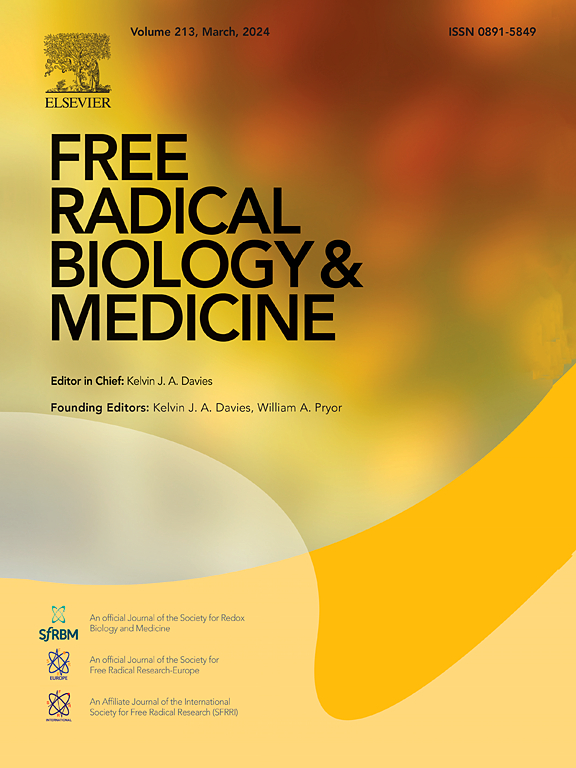N,N'-bis(2-mercaptoethyl)isophthalamide (NBMI) as a novel chelator for Wilson's disease
IF 7.1
2区 生物学
Q1 BIOCHEMISTRY & MOLECULAR BIOLOGY
引用次数: 0
Abstract
Wilson's Disease (WD) is a rare autosomal recessive disorder caused by mutations in the ATP7B gene. These mutations lead to defective copper (Cu) transport and to accumulation of Cu in tissues, primarily in the liver and brain. Current treatment options such as D-penicillamine, trientine, and zinc salts focus on increasing Cu excretion or reducing Cu absorption, but often cause debilitating side effects. N,N′-bis(2-mercaptoethyl)isophthalamide (NBMI) is a lipophilic thiol-based compound originally developed for environmental decontamination. It has been shown to chelate toxic metals such as mercury, lead, and cadmium. This study was designed to evaluate the efficacy of NBMI to mitigate Cu overload using both in vitro and in vivo models of WD. HepG2 cells with the ATP7B gene knocked down had increased sensitivity to copper sulfate (CuSO4) compared to wild-type (WT) cells, validating the cell model for WD. Pretreatment with NBMI (2.5–50 μM) improved cell viability, reduced Cu-induced oxidative stress, decreased metallothionein levels, mitigated resulting DNA damage, and reduced overall levels of free intracellular Cu. In an established toxic milk mouse (tx-J) model of WD, 1% dietary NBMI effectively lowered hepatic, cerebral, and renal Cu levels. Treatment with 1% NBMI also improved liver function, as evidenced by reduced ALT levels and normalized hepatocyte morphology. Tx-J mice displayed higher liver-to-body weight ratios compared to WT mice, and treatment with 1% NBMI effectively reduced this ratio. While NBMI did not impact the elevated white blood cell counts and low platelet levels characteristic of tx-J mice, it also did not cause any detrimental effects on red blood cell, hemoglobin, and hematocrit levels. This dose of NBMI also restored homeostasis of other dysregulated essential metal ions in tx-J mice. These findings suggest that dietary administration of NBMI effectively chelates excess free Cu, ameliorates WD symptoms and offers a promising alternative to existing chelators.

求助全文
约1分钟内获得全文
求助全文
来源期刊

Free Radical Biology and Medicine
医学-内分泌学与代谢
CiteScore
14.00
自引率
4.10%
发文量
850
审稿时长
22 days
期刊介绍:
Free Radical Biology and Medicine is a leading journal in the field of redox biology, which is the study of the role of reactive oxygen species (ROS) and other oxidizing agents in biological systems. The journal serves as a premier forum for publishing innovative and groundbreaking research that explores the redox biology of health and disease, covering a wide range of topics and disciplines. Free Radical Biology and Medicine also commissions Special Issues that highlight recent advances in both basic and clinical research, with a particular emphasis on the mechanisms underlying altered metabolism and redox signaling. These Special Issues aim to provide a focused platform for the latest research in the field, fostering collaboration and knowledge exchange among researchers and clinicians.
 求助内容:
求助内容: 应助结果提醒方式:
应助结果提醒方式:


